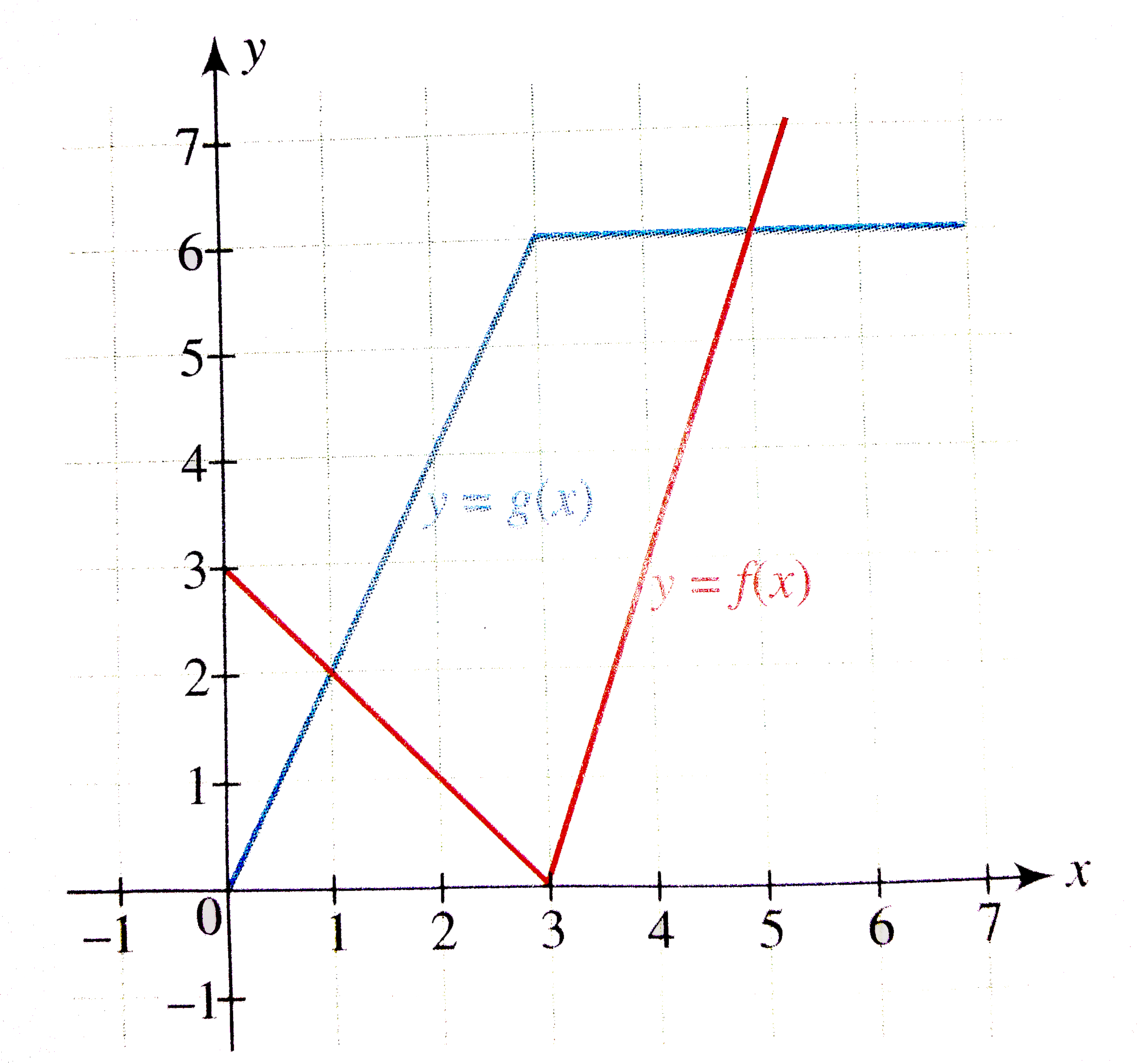We say an equation f(x)=g(x) is consistent, if the curves y=f(x)andy=g(x) touch or intersect at atleast one point. If the curves y=f(x)andy=g(x) do not intersect or touch, then the equation f(x)=g(x) is said to be inconsistent i.e. has no solution.
Among the following equations, which is consistent in (0,π/2)?
sinx+x2=0
cosx=x
tanx=x
All of these
The correct Answer is:B
To determine which of the given equations is consistent in the interval (0,π2), we need to analyze the intersections of the curves represented by the equations. A consistent equation means that the curves intersect or touch at least once within the given interval.
1. Identify the equations:
- The equations provided are:
1. f(x)=sinx and g(x)=−x2
2. f(x)=cosx and g(x)=x
3. f(x)=tanx and g(x)=x
2. Analyze the first equation: sinx=−x2:
- The graph of y=sinx is positive in the interval (0,π2).
- The graph of y=−x2 is negative in this interval.
- Since one function is always positive and the other is always negative, they do not intersect.
- Conclusion: This equation is inconsistent.
3. Analyze the second equation: cosx=x:
- The graph of y=cosx starts at 1 when x=0 and decreases to 0 as x approaches π2.
- The graph of y=x is a straight line starting from (0,0) and increasing.
- Since cosx decreases from 1 to 0 and y=x increases from 0 to π2, they must intersect at least once in the interval (0,π2).
- Conclusion: This equation is consistent.
4. Analyze the third equation: tanx=x:
- The graph of y=tanx increases rapidly and approaches infinity as x approaches π2.
- The graph of y=x is a straight line.
- They intersect at (0,0), but since this point is excluded from the open interval (0,π2), they do not intersect within the interval.
- Conclusion: This equation is inconsistent.
Final Conclusion:
Among the given equations, the only consistent equation in the interval (0,π2) is:
- Option 2: cosx=x
- The equations provided are:
1. f(x)=sinx and g(x)=−x2
2. f(x)=cosx and g(x)=x
3. f(x)=tanx and g(x)=x
- The graph of y=sinx is positive in the interval (0,π2).
- The graph of y=−x2 is negative in this interval.
- Since one function is always positive and the other is always negative, they do not intersect.
- Conclusion: This equation is inconsistent.
- The graph of y=cosx starts at 1 when x=0 and decreases to 0 as x approaches π2.
- The graph of y=x is a straight line starting from (0,0) and increasing.
- Since cosx decreases from 1 to 0 and y=x increases from 0 to π2, they must intersect at least once in the interval (0,π2).
- Conclusion: This equation is consistent.
- The graph of y=tanx increases rapidly and approaches infinity as x approaches π2.
- The graph of y=x is a straight line.
- They intersect at (0,0), but since this point is excluded from the open interval (0,π2), they do not intersect within the interval.
- Conclusion: This equation is inconsistent.
Among the given equations, the only consistent equation in the interval (0,π2) is:
- Option 2: cosx=x
Topper's Solved these Questions
- DY / DX AS A RATE MEASURER AND TANGENTS, NORMALS BOOK - ARIHANT MATHS ENGLISHCHAPTER - DY / DX AS A RATE MEASURER AND TANGENTS, NORMALS EXERCISE - EXERCISE : 5
1 Videos
- DY / DX AS A RATE MEASURER AND TANGENTS, NORMALS BOOK - ARIHANT MATHS ENGLISHCHAPTER - DY / DX AS A RATE MEASURER AND TANGENTS, NORMALS EXERCISE - Exercise (Matching Type Questions)
1 Videos
- DY / DX AS A RATE MEASURER AND TANGENTS, NORMALS BOOK - ARIHANT MATHS ENGLISHCHAPTER - DY / DX AS A RATE MEASURER AND TANGENTS, NORMALS EXERCISE - Exercise (Statement I And Ii Type Questions)
7 Videos
- DIFFERENTIATION BOOK - ARIHANT MATHS ENGLISHCHAPTER - DIFFERENTIATION EXERCISE - Exercise For Session 10
4 Videos
- ELLIPSEBOOK - ARIHANT MATHS ENGLISHCHAPTER - ELLIPSEEXERCISE - Exercise (Questions Asked In Previous 13 Years Exam)
27 Videos
Similar Questions
We say an equation f(x)=g(x) is consistent, if the curves y=f(x)andy=g(x) touch or intersect at atleast one point. If the curves y=f(x)andy=g(x) do not intersect or touch, then the equation f(x)=g(x) is said to be inconsistent i.e. has no solution.
The equation sinx=x2+x+1 is
View SolutionLet us define the function f(x)=x2+x+1
Statement I The equation sinx=f(x) has no solution.
Statement II The curve y=sinx and y=f(x) do not intersect each other when graph is oberved.
View SolutionIf A and B are the points of intersection of y=f(x) and y=f−1(x), then
View SolutionA curve y=f(x) is passing through (0,0). If slope of the curve at any point (x,y) is equal to (x+xy), then the number of solution of the equation f(x)=1, is :
View SolutionLet f(x)=x3+x+1 and let g(x) be its inverse function then equation of the tangent to y=g(x) at x = 3 is
View SolutionIf (-1,2) and and (2,4) are two points on the curve y=f(x) and if g(x) is the gradient of the curve at point (x,y) then the value of the integral ∫2−1g(x)dx is
View SolutionIf f (x) and g (x) are two solutions of the differential equation (ad2ydx2+x2dydx+y=ex,thenf(x)-g(x) is the solution of
View SolutionGraph of y=f(x)andy=g(x) is given in the following figure. If h(x)=f(g(x)), then find the value of h'(2).

View SolutionLet f(x)=x2−5x+6,g(x)=f(|x|),h(x)=|g(x)|
The set of values of x such that equation g(x)+|g(x)|=0 is satisfied contains
View SolutionFind the equation of normal of the curve 2y=7x−5x2 at those points at which the curve intersects the line x = y.
View Solution
